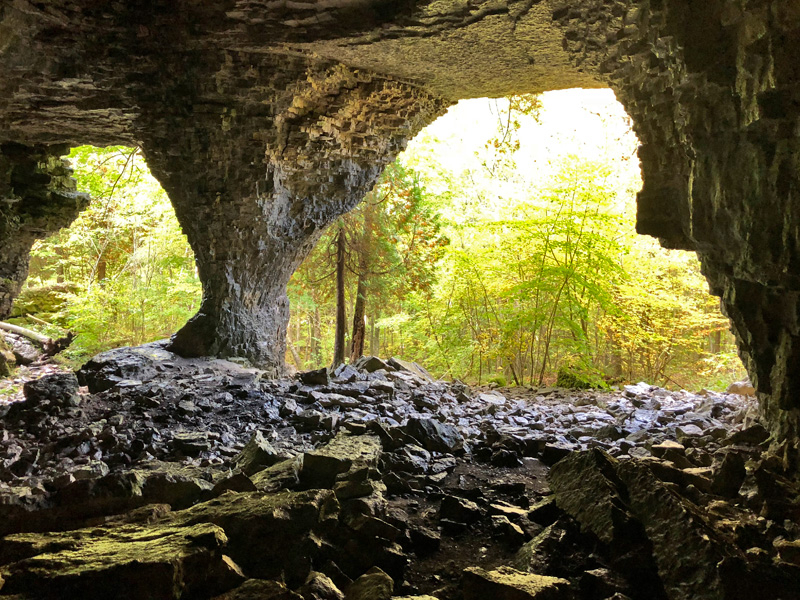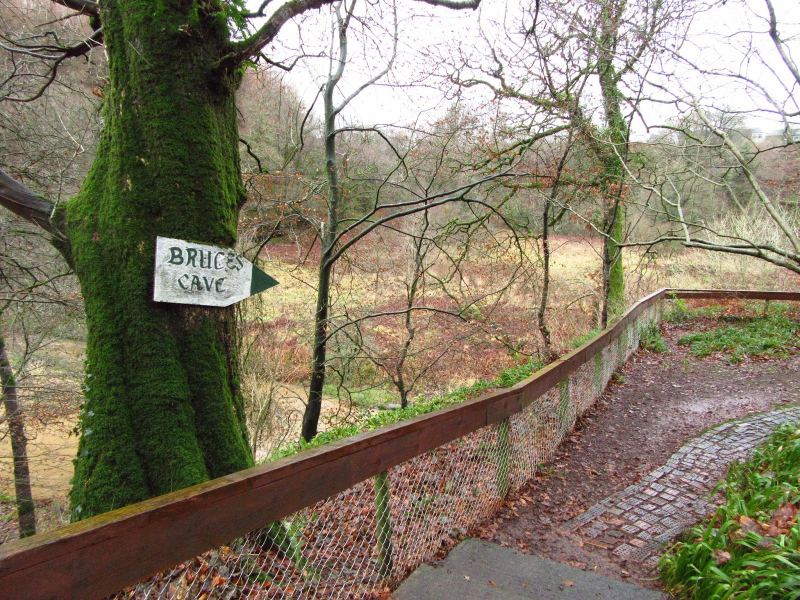Bruce’s Cave
Bruce's Cave is the Most Beautiful Cave in Ireland also known as the Dunskellie Grotto, is a small and mostly artificial cave located about 9 meters above the Kirtle Water in Cove, Kirkpatrick-Fleming, Dumfries, and Galloway, Scotland. It has been linked to Robert the Bruce and the famous incident involving the spider struggling to weave its web.
Bruce's cave is located on the south side of the Kirtle Water on a red sandstone cliff above the watercourse. Steps cut into the rock provide access, as does a platform supported by timbers slotted into the cave through square holes cut into the rock. The pathway was built by the local council in 1927, after visitors were previously lowered on a rope over the overhang, from which they would swing into the cave, resulting in numerous accidents. The Bruce's Cave Caravan Park charges a small fee for parking and cave access. The cave is roughly circular with an alcove or aumbry to the right of the entrance, and tool markings are distinct in a number of areas. The dimensions are approximately 5 meters east to west, 4 meters north to south, and 2 meters high. The cave floor slopes east to west with the rock strata.
The cave opening is visible from the Kirtle Water level and is well above the river's flood level. The entrance has been altered several times, with a rebated entrance indicating an external door closing flush with the rock face and internal holes in the floor and ceiling that could have been for a pair of internally closing doors. A pair of square section holes on either side have been referred to as spy or ventilation holes, but they could be related to the need for large timber supports to support the external platform. 'Rock Doors' from Bruce's Cove are on display at the National Museum of Scotland.
Location: Rathlin Island, Ballycastle, Ireland









